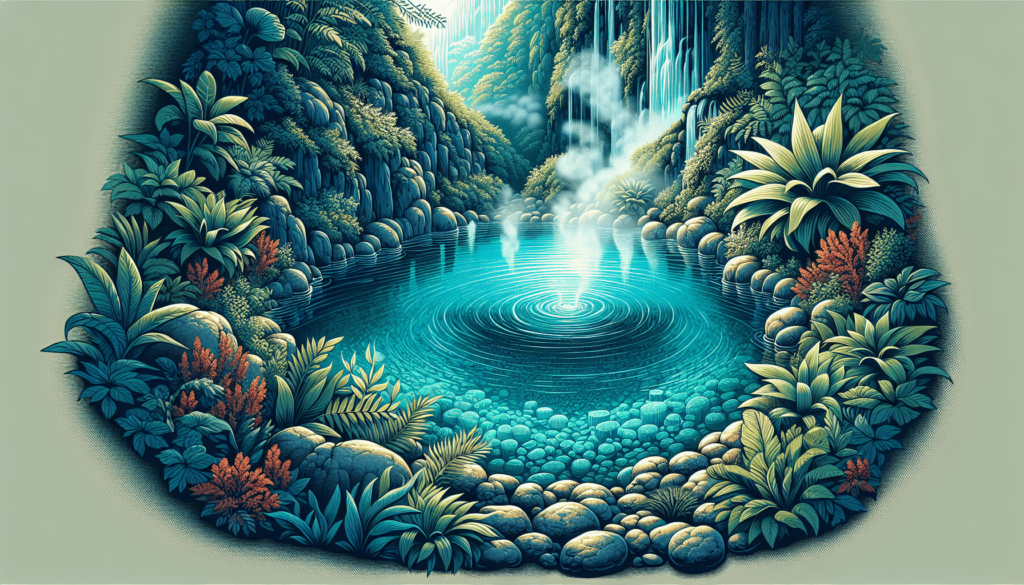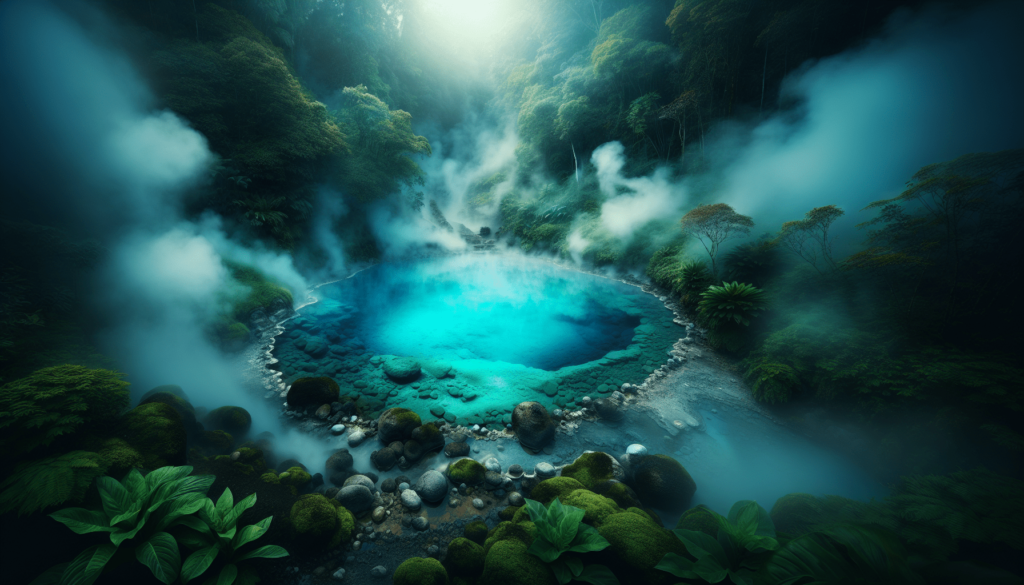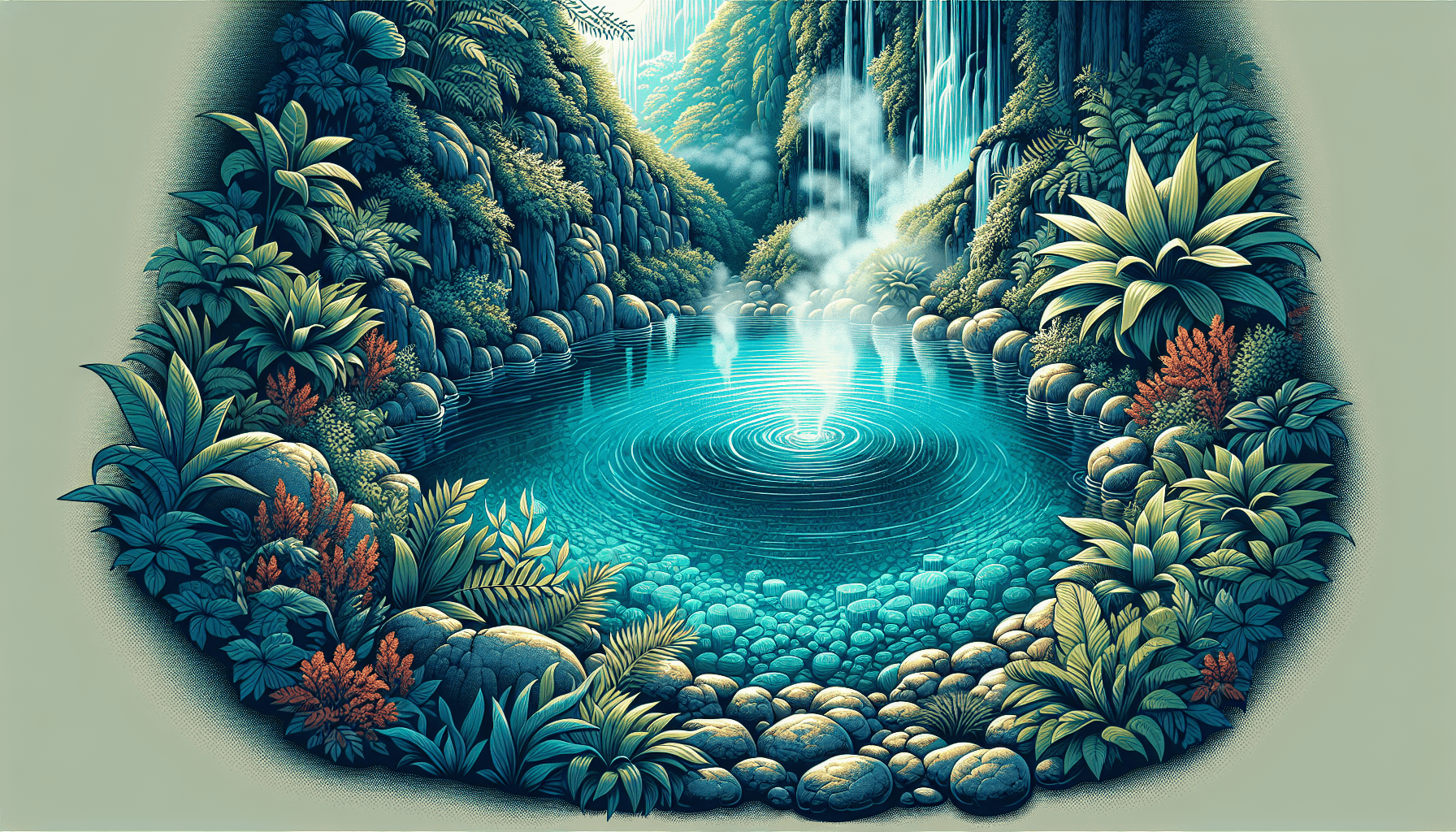Hot springs are a fascinating natural phenomenon that entices many curious minds to explore their therapeutic properties and embrace their warm embrace. But have you ever wondered what temperature these enchanting hot springs reach? Well, get ready to be amazed as we unravel the mysteries behind the scorching heat that lies within these mesmerizing geothermal wonders.
Understanding Hot Springs
Hot springs are natural sources of water that emerge from the ground at temperatures higher than the average human body temperature. These unique geological features have captivated human curiosity for centuries. To better comprehend the world of hot springs, we will explore their definition, formation, distribution, and importance.
Definition and Formation
Hot springs are formed when groundwater is heated by geothermal energy deep within the Earth’s crust. This geological phenomenon occurs when water seeps underground and comes into contact with hot rocks or magma chambers. As the water is heated, pressure builds up, causing it to rise to the surface, resulting in the formation of a hot spring.
Distribution
Hot springs are found in various parts of the world, although their distribution is not uniform. The presence of hot springs is influenced by geological factors, such as tectonic activity and the presence of volcanic regions. Many hot springs are found along fault lines, where the Earth’s crust is constantly shifting and allowing hot water to reach the surface.
Importance
Hot springs hold significant importance both culturally and geologically. Culturally, hot springs have been revered as sacred places by indigenous cultures around the world. These natural thermal baths are often associated with healing and spiritual ceremonies. Geologically, hot springs are crucial to understanding the Earth’s internal heat and energy distribution. They provide scientists with valuable insights into the planet’s geothermal activity and play a vital role in energy production and research.
Factors Affecting Hot Spring Temperature
A hot spring’s temperature depends on various factors, including geothermal heat, depth, water source, and geographical location.
Geothermal Heat
Geothermal heat is the primary factor governing the temperature of hot springs. The deeper the hot water source is to the Earth’s core, the hotter the spring will be. It is the transfer of this heat from the Earth’s interior that accumulates in underground reservoirs and contributes to the high temperatures observed in hot springs.
Depth
The depth at which a hot spring is located also influences its temperature. Hot springs located closer to the surface tend to be cooler than those found at greater depths. This is because the heat from the Earth’s core dissipates as it travels through the layers of the Earth’s crust, resulting in a reduction in temperature.
Water Source
The source of the water flowing into a hot spring can impact its temperature. If the water originates from snowmelt or rain, it will likely have a lower temperature. On the other hand, if the water is heated by contact with hot rocks or magma, it will have a higher temperature when it emerges as a hot spring.
Geographical Location
The geographical location of a hot spring plays a crucial role in determining its temperature. Hot springs situated in regions with higher volcanic activity, such as Iceland or Japan, can reach exceptionally high temperatures due to the abundance of geothermal energy. In contrast, hot springs in regions without active volcanoes may have lower temperatures.

Typical Range of Hot Spring Temperatures
Hot springs exhibit a wide range of temperatures, including low-temperature, medium-temperature, high-temperature, and superhot springs.
Low-Temperature Hot Springs
Low-temperature hot springs typically have temperatures ranging from 77°F to 98.6°F (25°C to 37°C). These milder hot springs provide a suitable environment for relaxation and are often frequented for their therapeutic properties.
Medium-Temperature Hot Springs
Medium-temperature hot springs generally maintain temperatures between 98.6°F and 113°F (37°C and 45°C). These springs offer a pleasant bathing experience and are popular among individuals seeking relaxation and rejuvenation.
High-Temperature Hot Springs
High-temperature hot springs can reach temperatures exceeding 113°F (45°C). These scalding hot springs are not suitable for direct human contact but serve as important geological indicators of intense geothermal activity.
Superhot Springs
Superhot springs are the extreme end of the temperature spectrum, with temperatures surpassing the boiling point of water (212°F or 100°C). These rare and dangerous hot springs are considered unstable and can pose significant risks to both human life and surrounding ecosystems.
Examples of Hot Spring Temperatures
Hot springs can be found across the globe, offering unique experiences based on their temperature. Let’s explore some notable examples from different regions.
Hot Springs in North America
North America is home to several renowned hot springs with varying temperatures. For instance, the Boiling River in Yellowstone National Park, USA, is a popular destination with temperatures reaching up to 140°F (60°C). In contrast, the Chena Hot Springs in Alaska feature medium-temperature springs, perfect for indulging in warm mineral baths.
Hot Springs in Iceland
Iceland is renowned for its geothermal features, including numerous hot springs. The Blue Lagoon, one of Iceland’s most famous attractions, is a medium-temperature hot spring averaging around 100°F (38°C). Additionally, the Snorralaug Hot Spring near Reykjavik offers a unique historical experience in a low-temperature setting.
Hot Springs in Japan
Japan boasts a rich hot spring culture, known as onsen, with a wide range of temperatures. The Kamchatka Peninsula hosts the Hachimantai Onsen, offering a diverse range of hot springs, including high-temperature ones. Meanwhile, Kusatsu Onsen is famous for its scalding hot springs, reaching temperatures of up to 170°F (77°C).
Hot Springs in New Zealand
New Zealand’s geothermal wonders are a testament to its active volcanic activity. The Wai-O-Tapu hot springs showcase a variety of temperatures, ranging from low to high. The Champagne Pool, for example, reaches temperatures of approximately 165°F (74°C), while the nearby Mud Pool features cooler temperatures suitable for mud treatments.

Measurement and Units
The temperature of hot springs can be measured using two common units: Celsius (°C) and Fahrenheit (°F).
Celsius (°C)
Celsius is the metric unit widely used to measure hot spring temperatures. It is the standard unit of temperature in most parts of the world. On the Celsius scale, water freezes at 0°C and boils at 100°C.
Fahrenheit (°F)
Fahrenheit is primarily used in the United States to measure temperature. It provides an alternate scale to Celsius, with water freezing at 32°F and boiling at 212°F. The Fahrenheit scale is often used alongside Celsius to cater to different measurement preferences.
Effects of Hot Spring Temperatures
The temperature of a hot spring has various effects, ranging from therapeutic properties to biological adaptations.
Therapeutic Properties
Hot springs have long been associated with healing and therapeutic properties. The warm water and mineral-rich content of many hot springs are believed to have positive effects on the body. Hydromassage, relaxation, and improved blood circulation are some of the benefits often attributed to hot spring bathing.
Recreation and Relaxation
Hot springs provide opportunities for recreation and relaxation. Indulging in a hot spring bath can offer a serene environment, providing stress relief and a soothing escape from everyday life. Many hot spring destinations offer additional amenities such as saunas, spas, and massages, enhancing the overall recreational experience.
Biological Adaptations
Hot springs create unique ecological niches that can support a variety of specialized organisms. Certain types of bacteria and extremophiles have adapted to thrive in the extreme conditions of hot springs. These microbial communities play a crucial role in the ecosystem and contribute to the distinctive colors and textures often observed in hot spring environments.
Hot Springs and Volcanic Activity
Hot springs and volcanic activity are closely interconnected, with volcanic regions often hosting an abundance of hot springs. Let’s explore the relationship between hot springs and volcanoes and the potential hazards associated with their coexistence.
Relationship Between Hot Springs and Volcanoes
Volcanic regions are rich in geothermal energy, which contributes to the formation of hot springs. The intense heat generated by volcanoes can superheat underground water sources, causing them to rise to the surface as hot springs. Volcanic activity also creates fractures in the Earth’s crust, facilitating the movement of hot water through these openings.
Volcanic Hazards and Hot Springs
Although hot springs can be awe-inspiring natural wonders, the proximity to volcanoes also brings potential hazards. Volcanoes can release gases, such as toxic sulfur dioxide, which may dissolve in the hot spring water and pose health risks to individuals. Additionally, volcanic eruptions can trigger changes in the chemistry and temperature of hot springs, potentially altering their natural equilibrium and rendering them unsafe for visitors.
Human Utilization of Hot Springs
Hot springs have been utilized by humans in various ways throughout history, showcasing their practical value beyond their natural beauty.
Bathing and Spa Culture
Hot springs have long been used as natural baths, offering therapeutic and relaxation benefits. Around the world, cultures have developed diverse bathing traditions centered around hot springs. These traditions often incorporate specific protocols and rituals, promoting health and well-being through the healing properties of the hot water and minerals.
Geothermal Energy Generation
Hot springs are a valuable source of geothermal energy. Their high temperatures can be harnessed to generate electricity, heat buildings, or provide hot water for industrial processes. Geothermal power plants utilize the heat from hot springs to power turbines and produce clean, renewable energy.
Agriculture and Aquaculture
The warm water and nutrient content of certain hot springs lend themselves to agricultural and aquacultural applications. In some regions, hot springs are used for greenhouse cultivation, helping with the growth of crops and extending the growing season. Additionally, hot springs can support aquaculture activities, fostering the production of specific fish species that thrive in warm water environments.
Conservation and Management of Hot Springs
As natural resources, hot springs require careful conservation and management to preserve their ecological integrity and cultural significance.
Environmental Considerations
When developing or managing hot spring areas, it is important to consider the environmental impact. Strict guidelines should be implemented to minimize disturbances to the surrounding ecosystems. Protection of water quality, preservation of biodiversity, and ensuring sustainable tourism practices are crucial in maintaining the delicate balance of these unique habitats.
Protection and Regulation
Regulation and protection measures are essential to safeguard hot springs from overuse, pollution, and uncontrolled exploitation. Governments and local authorities play a crucial role in establishing protective measures, including zoning regulations, visitor limitations, and strict waste management protocols. Collaborative efforts between stakeholders, including indigenous communities, conservation organizations, and tourism authorities, are vital for ensuring the long-term viability of hot spring ecosystems.
Conclusion
Hot springs hold a fascination for many people worldwide, offering a unique blend of natural beauty, cultural significance, and geothermal wonders. Understanding the factors influencing hot spring temperatures, their various ranges, and the effects they have on both humans and the environment deepens our appreciation for these remarkable geological features. As we continue to explore and enjoy hot springs, it is crucial to remember the importance of their conservation and responsible utilization to ensure their preservation for future generations to enjoy.
